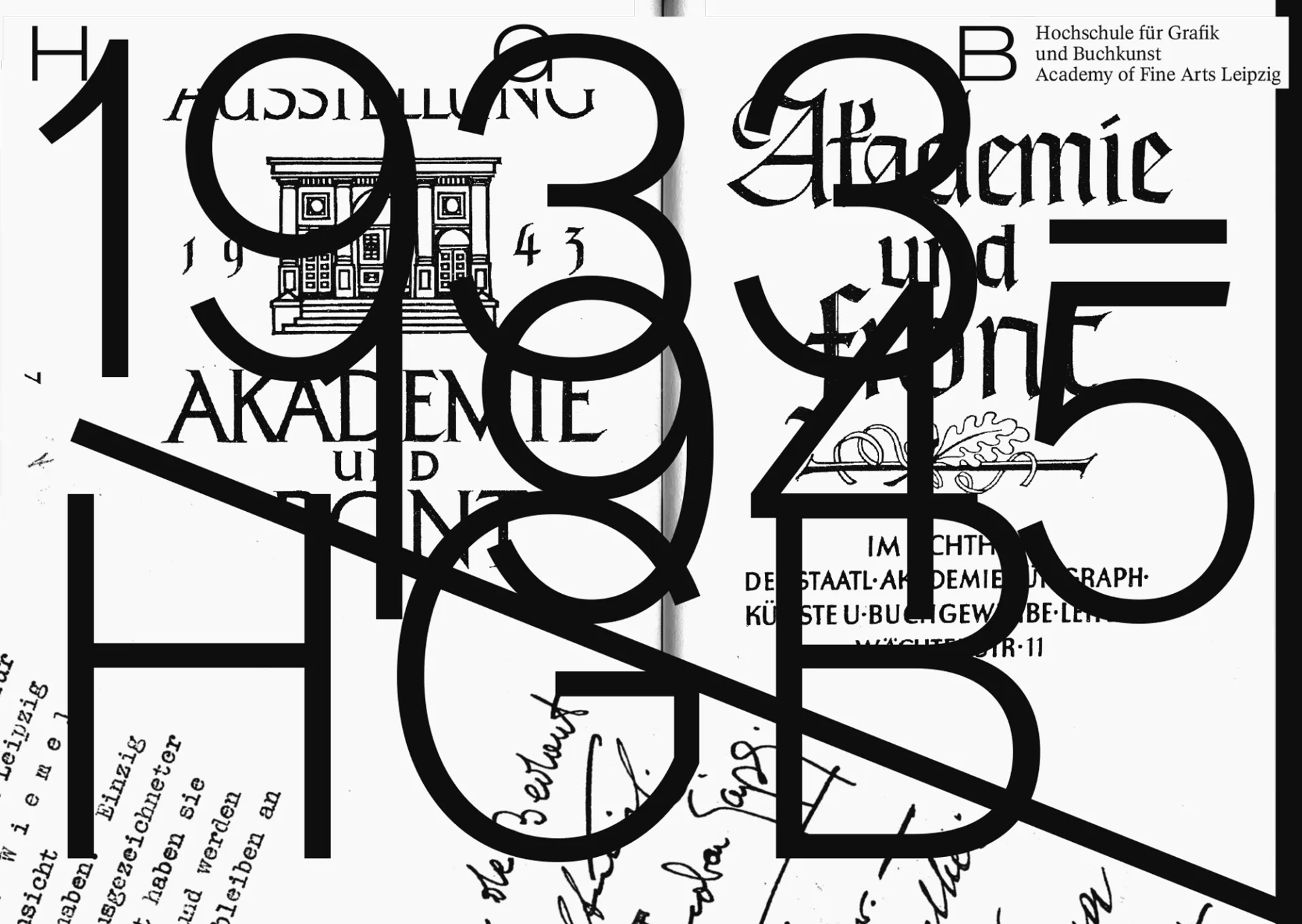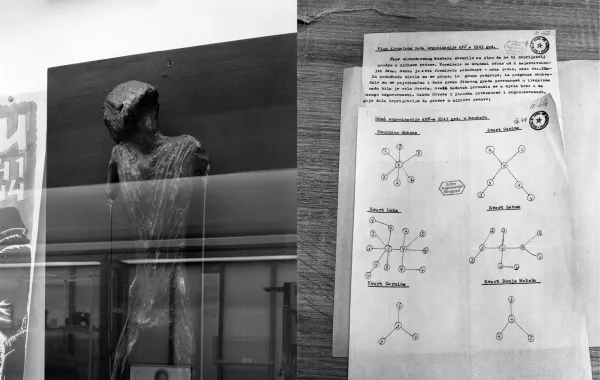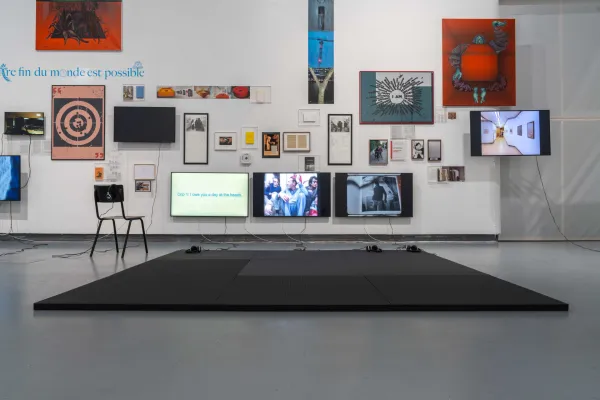1933-1945HGB. An exhibition of the HGB Archive
Opening: 03.06.2025, 6pm
Exhibition: 03.06.-26.06.2025
>>> Guided Tours: Fr. 13.06. 6:30-7:30pm, Tue. 17.06.+Tue. 24.6. 5:30-6:30pm
The exhibition provides an initial insight into the history of the HGB (then the Academy of Graphic Arts and Book Trade) during the National Socialist era. Research in the HGB archives and library, the state archives in Leipzig and Dresden, the digital holdings of the Leo Baeck Institute in New York, as well as a review of contemporary journals and current secondary literature form the basis for the material in the exhibition. It shows the current state of knowledge on this chapter of the institution's history and aims to invite further joint research.
In autumn 2025, HGB Magazine #3 will be published as a result of the HGB seminar on right-wing continuities that took place from 2021 to 2023. The seminar was organised by Julia Blume, Nanne Buurman and Julia Kurz, who also formed the editorial team for this themed magazine.
More information...
The gallery of the Academy of Fine Art sees itself as a membrane between the interior and exterior of the institution. The gallery's aim is to supplement and extend both the teaching contents and practices of the various departments as well as making a contribution to current inquiries in the arts, thereby establishing connections between internal and external discussions and - being situated in the centre of the academy - offering a social and discursive place for carrying out such debates. In the framework of the academy's specific capabilities, the gallery affords students, lecturers, invited artists, curators and theoreticians an experimental and reflective form of exhibition practice that can incorporate, beyond the presentations themselves, the active involvement with the exhibition and the reworking and reformulating discursive material.



